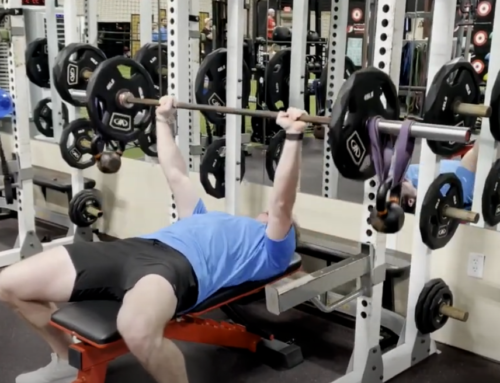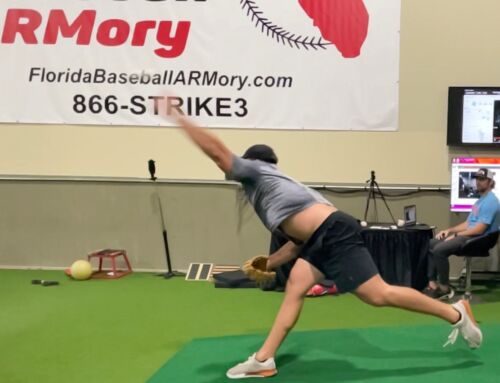
Is How You Learn A Skill Is More Important Than What You Learn?
Coming from the medical world was certainly a difference-maker in the early success of our students — many of whom were overcoming significant throwing injuries. Our knowledge of anatomy, physiology, kinesiology, biomechanics and the cellular biology of the human body, gave us the tools to help a lot of players.
However, while our medical background is definitely an edge in training players, it’s not the biggest separator.
The biggest difference-makers for our clients has been the deep dive we’ve taken in the past 6 years into the study of the science of skill acquisition and motor learning.
It turns out that HOW you learn or refine a skill like hitting, throwing, or pitching is more important than WHAT you actually learn. We have emerged as an industry leader in applying this leading-edge motor learning science to baseball training.
Here’ what we currently know:
First, this thing they call a “repeatable delivery” or a “repeatable swing” is a myth. It doesn’t exist, It’s impossible for an athlete to repeat a movement even twice. Every throw, every pitch, every swing is as unique as a snowflake. So, instead of teaching players to “repeat” their deliveries or their swings, we should be encouraging them to become world-class, real-time “adjusters” of their movements.
Every throw, pitch or swing will require a nearly infinite number of subtle adjustments. When you drive your car to a given destination, you don’t just set your GPS and let go of the steering wheel. Instead, you make thousands of tiny adjustments. It’s the same when you’re moving through a throw, pitch, or swing, you’ll need to make lots of tiny adjustments to optimize your performance.
And, we know those adjustments must occur subconsciously. We know this because we can measure the amount of time it takes for a neurologic impulse to travel from the brain, through the spinal cord, out to the muscles, and back up to the brain. And when we do the math, there isn’t enough time for any of that information to exchange hands by way of conscious thought.
So, we’re asking our athletes to perform skills that don’t allow them time to think about what they’re doing, yet in traditional coaching, we train them in ways that demand constant thinking about what they do.
I call it TWIT coaching. It’s and acronym … TELL them what to do. WATCH them do it. INFORM them of everything they’ve done wrong. Then, TELL them how to do it better. I confess, I was a TWIT coach for a long time.
“On your next throw, I need you to think about ___________.”
“No, you’re flying open, next pitch, I want you to concentrate on __________.”
“No, that’s not it either. On your next swing, you should focus on _________.”
Let me be clear:
There is no time for thinking, focusing or concentrating.
THERE’S NO TIME!
According to Dr. Nikolai Bernstein (the father of motor learning), “The body will organize itself in accordance to the overall goal of the activity.” It’s an axiom the instructors at The Florida Baseball ARMory live by every day.
An initial conscious thought can set the intent the movement — a key component of self-organization. However, while the movement is actually happening, there is no time for conscious thought.
The traditional approach to training is known as explicit learning. In this process, the coach is at the center of the training experience as he guides the athlete toward a presumed ideal model of movement (which doesn’t exist). The approach is usually heavily laden with verbal cueing and conscious thought and requires the athlete to be internally focused on where his body parts are in space.
Our primary approach to training is called implicit learning. Instead of chasing a coaches version of “ideal”, we set up training experiences that encourage the athlete to choose more efficient movement pathways, while discouraging him from choosing inefficient movement patterns. We do this by frequently changing the one of three variables (the environment, the athlete, and/or the task).
Motor learning research suggests that implicitly trained athletes learn faster, the learned skills transfer better to games, and here’s the best part …
Implicitly learned skills withstand psychological stress better than skills acquired explicitly.

Because our athletes learn their skills implicitly …
ARMory Guys Don’t Choke …
ARMory Guys Don’t Choke …
ARMory Guys Don’t Choke …
According to Dutch Motor Learning Specialist, Frans Bosch:
1) “The body shows very little interest in what the coach has to say.”
2) “Over 300 studies have shown that the best performers in any sport are able to accomplish the goals of their movement at a very high-level, but they cannot tell you how they do it.”
At the Florida Baseball ARMory, our training is heavily tilted toward the implicit learning side. We believe it’s a better way to train, and our results speak for themselves. For that reason, you’ll never see us standing over an athlete, vomiting incessant verbal cues, or demanding cognitive/conscious adjustments.
That begs a question.
“If you don’t train guys using a lot of verbal or cognitive cues, how do you elicit the changes necessary for improved performance?”
It starts with a thorough and meticulous evaluation to identify any possible contributors to sub-par performance or pain. This serves as the template for the hyper-individualized training that is the hallmark of the ARMory Training process.
Instead of “telling” an athlete what to do and how to do it, we employ an approach that in motor learning circles is known as “self-organization” — a term that has been misinterpreted and/or misapplied in mainstream coaching. To critics, self-organization implies a process in which the instructor simply opens the gates to the field and lets the athlete “Figure It Out” (FIO). But that is far from the truth. In self-organization, an instructor or coach attempts to create a training experience that encourages the athlete’s body to subconsciously choose more efficient pathways, while discouraging it from selecting less productive movement options.
One training method that encourages self-organization is known as A Constraints-Led Approach (CLA). While CLA may seem complex, it’s really quite simple. I believe the following infographic explains it well.

CLA is a large part of our training process, and it has helped our athletes achieve outstanding performance outcomes.
Let me be clear again.
It’s not that we NEVER use verbal/cognitive cues, explicit learning, or internal focus.
We do whatever it takes to help our athletes improve.
However, the bulk of our training at The ARMory is conducted under an implicit learning model, and CLA is a big part of that process.
Whether you’re looking to gain velocity, improve your command, develop filthy secondary stuff, or overcome arm pain or injury, we’ll give you the customized training plan you need and with the free 30-day membership to our Online Durathro® Training Program you’ll receive as a gift for attending the camp, we’ll be there to guide you along the path to success every step of the way.
Get started by calling, our CFO/COO Amy, at 866-787-4533.
We’ll see you at The ARMory.

Randy Sullivan, MPT, CSCS CEO, Florida Baseball ARMory




